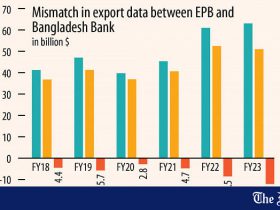Article content
Those looking for a reason why total wage growth has remained consistently high despite slowing inflation need look no further than the federal government, according to an analysis released this week by the Desjardins Group.
Average hourly compensation rose 5.1 per cent year-over-year in May, compared with a 4.7 per cent increase in April, according to the latest reading from Statistics Canada.
Article content
But while wage growth in the business sector has cooled, wage gains for public sector workers remain high. In the first quarter of this year, wage growth in the business sector increased by 3.4 percent and wage growth in the non-business sector increased by 8.4 percent, according to data from the Productivity Accounts. While the report notes that the latest increase marks a slowdown from the last quarter of 2023, when non-business sector wages rose by 10 percent, it remains high.
Randall Bartlett, senior director of Canadian economics at Desjardins and author of the report, said he believes a hiring spree and wage increases in the federal public service are driving overall wage growth in Canada.
Federal public sector employment has increased by 657,000 workers since 2019, an increase of 17 percent. Meanwhile, the private sector saw an increase of 662,000 positions, or four percent, over the same period.
The report notes that at the end of 2019, there were four private sector workers for every public sector worker, but that ratio has now dropped to 3.5 to one.
“The level of compensation and the extent of employment that we’re seeing at the federal level, I think, leads to distortions,” Bartlett said.
Article content
“It becomes much more profitable to work for the federal public service than in the private sector or the public service for municipal and provincial governments.”
Federal public servants are among the highest paid in Canada. Compared to 16 other industries, only employees working in the oil and gas sector earn more average hourly earnings.
In particular, those working in public administration at the federal level between January and May of this year earned an average of $45 an hour, above the overall public and private average of $35 an hour.
Recommended by the Editorial

A volunteer provides language support at a job fair in Cornwall, Ont., on April 24.
What the job boom means for the Bank of Canada

A person walks with a QR code at a job fair at the National Career and Continuing Education Events in Montreal.
The real story on Canada’s labor market before the data drops
The Bank of Canada sees wage growth as a factor in its inflation outlook, but is more concerned about the private sector, which could pass the costs directly on to consumers.
“It doesn’t really feed as directly as it would for private sector wages, which is much more tied to the business cycle,” Bartlett said. “If anything, it’s somewhat troubling in that it’s keeping total wage growth higher than it would otherwise be, but it’s certainly not indicative of broad-based inflation or economic conditions that will lead to more inflation in the future.
• Email: jgowling@nationalpost.com
Bookmark our website and support our journalism: Don’t miss the business news you need to know — add financialpost.com to your bookmarks and sign up for our newsletters here.
Share this article on your social network
Image Source : financialpost.com, https://www.pexels.com/







Leave a Reply